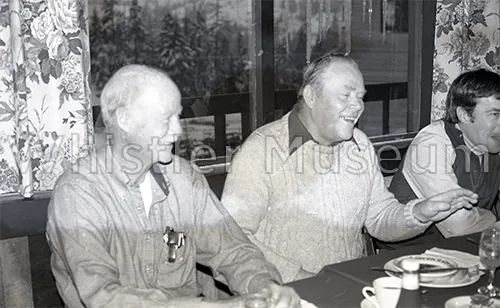Setting the Stage at Fortress Mountain
In the fall of 1974, the ambitious team of Dave Mathews, Lynn Mathews, and Hugh Smythe took significant steps to rejuvenate Fortress Mountain, which was underdeveloped and had previously succumbed to bankruptcy. Renamed from Snowridge, the area sought revitalization through a strategic overhaul that would ultimately lead to its sale by the Federal Business Development Bank (FBDB).
Negotiating a New Beginning
As the 1974-75 ski season unfolded, the team made considerable advancements in making Fortress a thriving ski resort. With success under their belt, they initiated discussions with FBDB regarding the sale. They approached Aspen Skiing Corp., at the time the leading ski company in North America, despite initial skepticism about the investment potential of such a small ski area in Alberta.
Pivotal Meetings and Timing
According to Hugh, the timing of their proposal was fortuitous. Darcy Brown, the president of Aspen, was reportedly looking for new ventures due to obstacles in expanding Snowmass. Seizing this moment, the team traveled to pitch Fortress to Brown, leading to an agreement in 1975 where Aspen purchased half of the resort while the other half remained with FBDB.
Growth and Education at Fortress
Following the sale, Dave and Lynn briefly took a hiatus before returning to manage the Whistler Inn and Resort. Meanwhile, Hugh was retained by Aspen to oversee Fortress. Committed to solidifying his knowledge of ski resort management, he enrolled in night classes at SAIT in Calgary.
Investments and Innovations
During his tenure at Fortress, Hugh advocated for the installation of the resort’s first triple chair lift. With thorough planning and operational strategies, the resort began to turn a profit. Meanwhile, significant happenings influenced the future trajectory of Whistler’s development.
Collaborative Efforts and New Ventures
In 1977, Hugh was introduced to Paul Mathews, prompting a collaborative proposal for Blackcomb Mountain. Their preparation coincided with 20th Century Fox’s lucrative venture from Star Wars merchandising. Aiming to secure financing, they presented their plans to Aspen’s board, though it initially did not gain traction. Subsequently, Aspen expressed interest in Blackcomb, making Hugh face a crucial career decision between his ongoing collaboration or allegiance to Aspen.
Blackcomb Mountain Development
In 1978, Aspen, bolstered by its stock from 20th Century Fox, won the bid for Blackcomb Mountain. As the development commenced, it led to heightened competition for Hugh, as he maneuvered back to Whistler amidst changing dynamics marked by the establishment of Whistler Village. The opening of Blackcomb Mountain on December 4, 1980, heralded an era of substantial change, potentially pivoting Whistler toward its current stature as a premier ski destination.
The Impact on Whistler’s Evolution
The transformation of Fortress Mountain inevitably shaped Whistler’s future, illustrating how an investment in snowfall, development, and community engagement can culminate in a renowned resort. Had it not been for a few pivotal decisions and the determination of early stakeholders, Whistler may have had a drastically different infrastructure.
Concluzie
The revitalization of Fortress Mountain not only rescued a bankrupt ski area but also laid the groundwork for a thriving ski community that continues to draw enthusiasts today. The story of Fortress is a testament to the resilience of ski resort development and its ongoing influence on international tourism trends, as the demand for ski-enhanced travel remains robust and multifaceted. For exploring incredible destinations within the vibrant world of yachting, GetBoat.com is an excellent resource suited to every taste and budget.

 Revitalizing a Ski Resort: The Fortress Mountain Story">
Revitalizing a Ski Resort: The Fortress Mountain Story">
